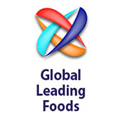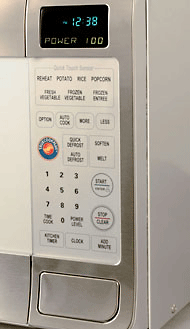
In the study, researchers followed the journey of a gallon of milk from the beginning of the lifecycle when crops are grown to feed cows; milk is produced and delivered to processors; through processing, packaging and distribution; all the way to the purchase and disposal of the gallon of milk by the consumer. The completion of the study is a significant first step for the dairy industry in a comprehensive, science-based approach to measure and improve its environmental footprint.
The carbon footprint study, together with data from additional studies measuring greenhouse gas (GHG) emissions, helps validate total US dairy GHG emissions are approximately 2 percent of total
The carbon footprint study identifies opportunities for efficiency and innovation across the fluid milk supply chain, including feed efficiency, manure management, energy management and fuel efficiency. A key finding indicates management practices are an important driver of the carbon footprint for farms, plants and transportation fleets, rather than the geographic region, business model, or size of the farm or organization.
The carbon footprint study will be published in a peer-reviewed scientific journal in 2011. In addition, studies on nutritional value, economic impact and other environmental measures such as water quality and conservation are underway as the industry seeks more ways to work together for a healthy planet, says Barnes.
Ten projects are underway, which are expected to reduce the dairy industry’s carbon footprint of fluid milk by the year 2020. According to Barnes, the Dairy Delivery Systems Life Cycle Assessment project (LCA) looks at both packaging and processing and finds ways to reduce GHG emissions associated with milk production. It will also assess the GHG impacts of many common existing and emerging packaging formats and associated processing technologies for fluid milk products.
The

Glass Packaging Institute names Clear Choice Award winners
This year’s awards recognized 10 consumer product goods (CPG) companies (nine food and beverage and one cosmetics) and their achievements in expanding the frontiers of glass packaging design in the following categories: overall package design, beer, wine, food, carbonated beverage, non-carbonated beverage, organic food or beverage, distilled spirits, flavored alcoholic beverage (FAB) and cosmetics or fragrances.
The 2010 Clear Choice Awards winners include:
-
Overall Package Design-The
Boston - Beer Category-Miller Lite for Miller Lite Vortex bottle
- Wine Category-Eight Arms Cellars for The Tentacle
- Food Category-B&G Foods, Inc. for B&M Baked Beans “Beanpot”
- Carbonated Beverage Category-Route 66 Sodas LLC for Route 66 Sodas
- Non-Carbonated Beverage Category-Very Cherre by Old Orchard Brands, LLC for Very Cherre Montmorency Tart Cherry Juice
- Organic Food or Beverage Category-Adina For Life, Inc. for Adina Holistics
- Distilled Spirits Category-Proximo for The Kraken Black Spiced Rum
- Flavored Alcoholic Beverage Category-Diageo for Smirnoff Premium Malt Mixed Drinks
-
Cosmetics or Fragrances Category-
Bath

Global Leading Foods opens HPP facility
Co-located with Castle & Cooke, the GL Foods plant can provide customers with services such as labeling, kitting, packaging and shipping.
The dedicated HPP contract processing facility uses the high-capacity model QFP 350L-600 HPP system from Avure Technologies. With a working capacity of 350 liters per cycle and fast cycle times, the HPP system achieves rapid food-borne pathogen destruction in products ranging from ready-to-eat meat to wet salads and sauces.Automation News

New technology improves microwave-cooked, processed food
TrueCookPlus is an embedded software product that is installed along with the microwave oven’s operating system at the factory. It’s a software interpreter-similar to the PostScript programming language interpreter for laser printers. Create instructions, enter them into the system, and in the case of a microwave oven, the embedded interpreter decodes the instructions, takes into consideration the food type (its condition, starting state, weight and packaging characteristics), atmospheric pressure, humidity, power-line voltage, magnetron state, etc.-and adjusts the cooking process to match the particular food product. The instruction set for the microwave is a three-, four- or five-digit number the consumer enters into the microwave-instead of the usual time and power settings. These instructions are interpreted by the software, compared to a laboratory reference oven in which the food was originally tested and cooked and then translated to the specific instructions needed by the consumer microwave to cook the food.
Currently, according to Microwave Science Chief Technology Officer Steven Drucker, microwave partners include LG and
Based on a laboratory-standard reference oven, the codes and software work together to create perfect, standardized and exact results every time, cooking each product for maximum flavor and to meet guidelines set by the FDA and USDA for safe food preparation, eliminating the risks associated with food-borne bacteria. When Microwave Science determines the perfect cooking process for a given food product, the code is given to processors to print on their packaging.
The technology allows the company to develop the internal programming code for the microwaves plus the cooking code the consumer enters into the TrueCookPlus-enhanced microwave. While this is a very simple explanation, the equipment, programming and technology involved are anything but simple. But simple it is for the end user. For more information, visit the TrueCookPlus website.
Software helps processor maintain food quality, safety
Harris Ranch’s commitment to product integrity and food safety is exemplified through the company’s voluntary residue control program that monitors its cattle feed for pesticide residues while verifying absence of residues in beef at frequencies that exceed USDA requirements. The processor is one of three companies in the
“Qualtrax was a natural fit for our company. The software will enable our team to be even more precise in the execution and documentation of our food safety efforts,” says Harris Ranch’s Quality Manager Brandon Carlson. “Qualtrax will be an integral tool for our operation and will help maintain the integrity of our brand, which we have worked so hard to build over the years. Uncompromising food safety practices are a necessity in our industry, and Qualtrax is an invaluable tool for us moving forward.”
Harris Ranch plans to use the software to maintain documentation within its quality department and to automate its business processes. In addition to the software’s compliance platform, Harris Ranch also selected the software’s quality and control point module to help collect and analyze critical data using portable, ruggedized computers.
Processor puts open-source, Linux-based ERP put to the test
With a rigid, legacy accounting software vendor that continued to lock down the source code of its aging product, Thymly didn’t have the control over its operations it needed to take its business to the next level. In 2007, the company began searching for a more agile ERP solution that would help its business grow.
“As part of our due diligence we spoke with several companies that were running ERPs of all sizes, and the feedback was consistent-the bigger the software house, the more problems with the ERP program,” says Harry Muller-Thym, Sr., founder of Thymly. After looking at both large and small vendors, Thymly chose xTuple because of its open source philosophy and excellent customer support.
“Since September 11, 2001, restrictions and regulations have continued to tighten in the food industry, and xTuple works very closely with us to understand our specific needs and ensure that we are able to meet the changing requirements,” adds Muller-Thym.
Thymly shut down its previous accounting system on March 31, 2009, and went live with Linux-based xTuple the next day. Some of the many benefits the open-source software provides for Thymly include:
- Cost savings in inventory control-Thymly was able to reduce its inventory considerably within three months of implementation.
- Traceability-The new ERP system allows Thymly to tag each product with lot numbers and weights and to track it 100 percent through the supply chain. In the case of an FDA recall, the company is able to respond within minutes, much faster than industry norms.
- Integration-With its open-source technologies, the ERP package allows for integration with other software and production equipment. This allows Thymly to consistently produce the same quality product each and every time.
- Better control over accounts receivable-By automating invoicing and A/R follow-up, Thymly is able to significantly speed up collections.
- Permissions-based access-The software’s support for application permissions assigned by employee roles has helped Thymly with additional regulations set in place after September 11.
Food Safety News

GMA Conference highlights food safety
A stakeholder panel composed of regulatory and food, beverage and consumer products manufacturing professionals will address some of the act’s key components including facility hazard evaluation & preventive controls, food facility re-inspection and allocation of inspection resources based on risk profiles of food facilities.
Panelists include:
-
Robert E. Brackett, Ph.D., director and vice president of the
National Center - Dr. Matilda Freund, senior director food safety, Kraft Foods-Freund leads the worldwide Food Safety team at Kraft Foods. She is an expert in global food safety including HACCP design and development on an international level. Freund’s team has responsibility for the development and implementation of global strategies and policies in the areas of food safety, toxicology, thermal processing and microbiology. In addition, her team is a key partner in the product development process to ensure appropriate design and stability from the product, process and distribution perspective. Over her 20-year career at Kraft, Freund has held various positions including product development, sanitation, quality and production management.
-
Joseph Levitt, partner, Hogan Lovells-Levitt is a 25-year veteran of FDA. He focuses on the development and implementation of legislative and regulatory policy regarding the manufacture and marketing of food, drugs and medical devices and how to work effectively with the FDA and related agencies. Levitt also brings in-depth knowledge to a wide range of matters, including food and drug safety, biotechnology, labeling, advertising and bioterrorism. From February 1998 through December 2003, he served as director of FDA’s CFSAN, where he led successful efforts to modernize food safety regulation and enhance the security of the
US - Brent Brehmer, corporate manager regulatory compliance and HACCP, Hormel.

Bad eggs highlight need for more regulations
“This recall highlights the need for legislation I recently introduced – The E. coli Traceability and Eradication Act – which would require USDA to regulate all strains of toxin-producing E. coli,” DeLauro says.
The Congresswoman says USDA only requires testing for E. coli 0157:H7, but she wants the agency to classify all toxin-producing E. coli strains as adulterants subject to testing.
“As we have seen recently with the huge recall of potentially salmonella-contaminated eggs, there is a dire need to improve and modernize our food safety system, and I will continue to work to make that a reality,” DeLauro says.
Extending the life of soy oil without hydrogenation
But, there may be a solution. Kristin Bilyeu, a researcher with the USDA Agriculture Research Service located in the Michigan University College of Agriculture, Food and Natural Resources, has developed a soybean plant that produces an oil low in saturated and trans fats.
“When we started this research, we were looking at three factors,” says Bilyeu. “We needed a heart-healthy oil. It needed to be stable with a good shelf life. Finally, it needed to be economically feasible. Oleic acid is a stable component of oil and is not a saturated fat. It does not require hydrogenation, which stabilizes oil but creates trans fats. Oleic acid is the main component of olive oil, but is not a large component in soybean oil. We set out to help the soybean produce more oleic acid in the beans.”
Through natural pollination procedures, Bilyeu and Grover Shannon, professor of plant sciences at MU, developed soybean oil that was very high in oleic acid, which not only stabilized the oil, but also made it healthier. The natural breeding increased oleic acid in the bean from 20 percent to 80 percent and decreased the amount of saturated fat in the oil by 25 percent.
Additionally, because the new oil is more stable, it doesn’t require hydrogenation, which typically rids the oil of Omega-3 fatty acids, which are good supplements for the human heart.
The next step of the research is determining whether this soybean will produce economically viable yields in different environments. Soybeans are grown in nearly every climate in the middle of the country. Preliminary results look promising.
“One of the nice things about this trait of producing oil that is high in oleic acid is that it appears to be very stable,”